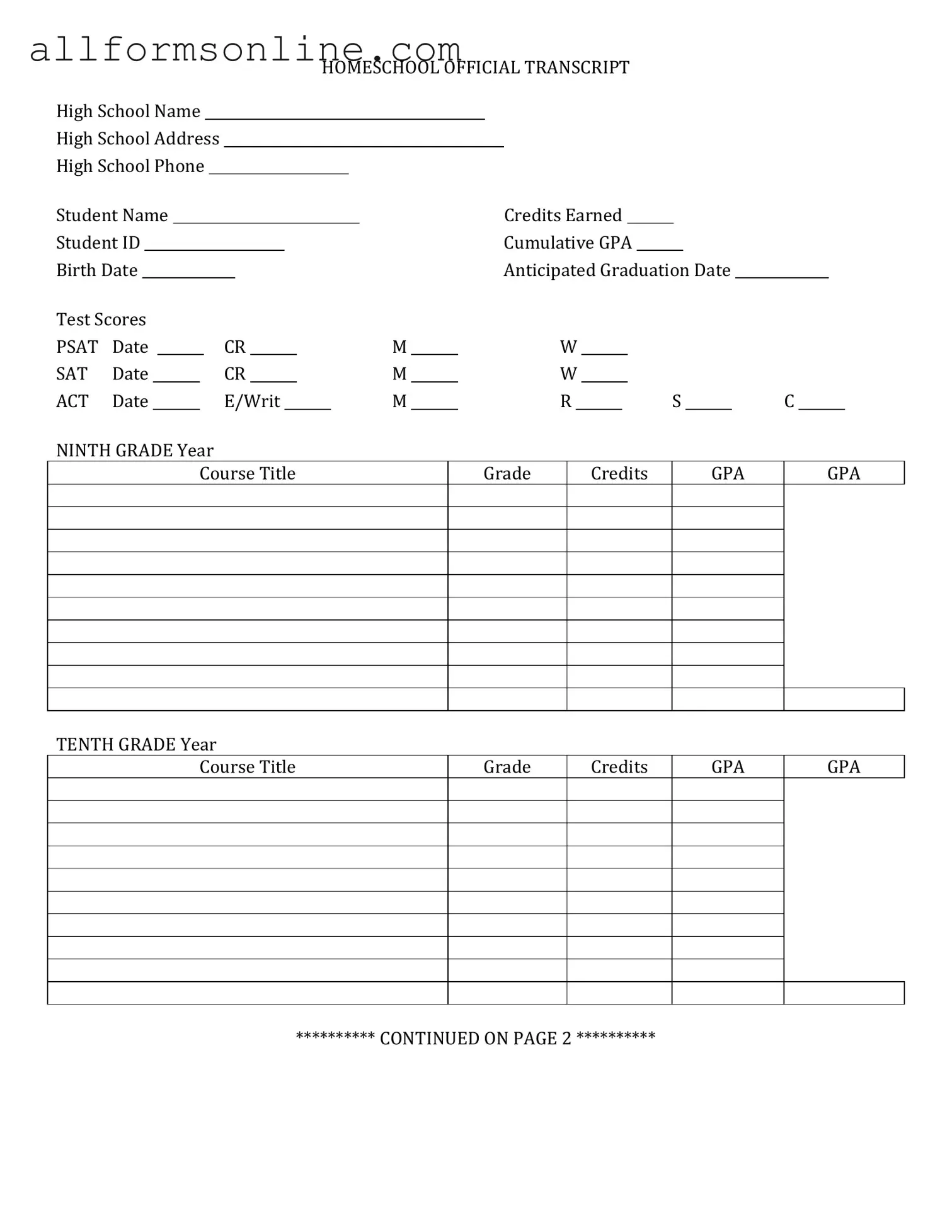What is a High School Transcript?
A high school transcript is an official document that lists a student's academic performance throughout their high school years. It includes courses taken, grades received, and credits earned. This document is often required for college applications and job opportunities.
How do I request my High School Transcript?
To request your high school transcript, you typically need to contact your school's registrar or administrative office. Some schools may have an online request form, while others might require a written request. Be sure to provide your full name, date of birth, and any other identifying information to expedite the process.
Is there a fee for obtaining my transcript?
Many schools do not charge a fee for providing transcripts, especially for current students. However, some institutions may impose a small fee for alumni or for expedited processing. It’s best to check with your specific school for their policy regarding fees.
How long does it take to receive my transcript?
The time it takes to receive your transcript can vary. Generally, it can take anywhere from a few days to a couple of weeks, depending on the school’s processing times and whether the request is made during peak periods, like the end of the school year. If you need it urgently, be sure to mention that in your request.
Can I get my transcript sent directly to a college or employer?
Yes, most schools allow you to request that your transcript be sent directly to a college or employer. When making your request, specify the recipient's name and address or email. This ensures that your transcript is delivered securely and directly to the intended party.
What should I do if there are errors on my transcript?
If you notice any errors on your transcript, it’s important to address them as soon as possible. Contact your school’s registrar or administrative office to discuss the discrepancies. They will guide you through the process of correcting any mistakes, which may involve submitting supporting documentation.
Do I need to provide my transcript for job applications?
While not all employers require a high school transcript, some may ask for it, especially for entry-level positions or internships. If you’re applying for jobs that require proof of your education, having your transcript ready can be beneficial.
What if I graduated from a different high school?
If you graduated from a different high school, you will need to request your transcript from that school. Each school has its own process for transcript requests, so reach out to their registrar's office for guidance. Be prepared to provide your graduation year and any other necessary details to help locate your records.
